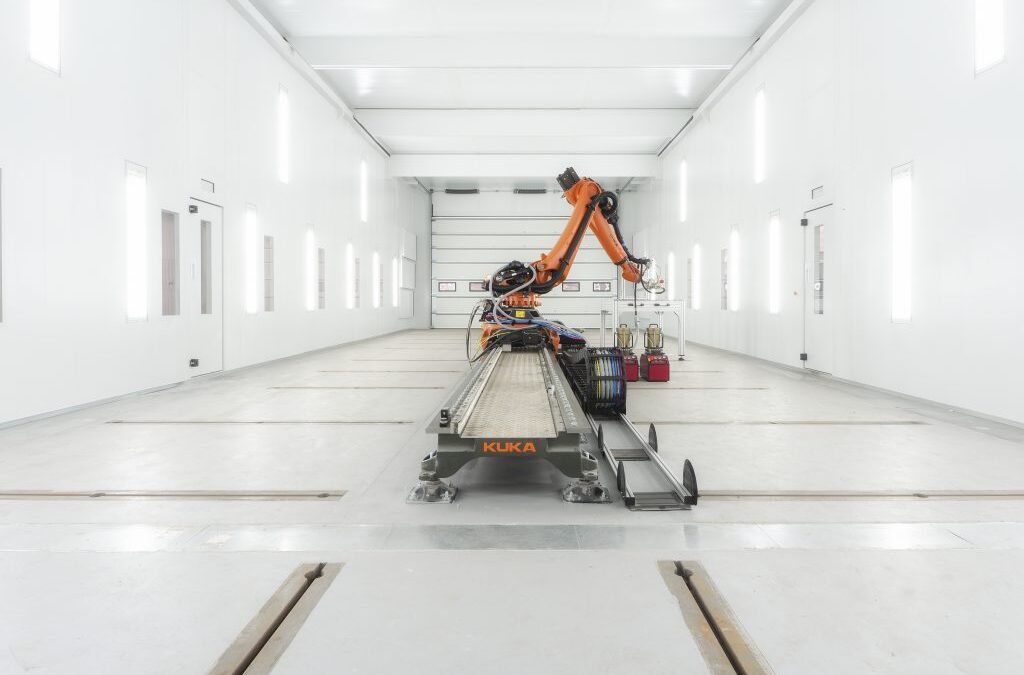What is Cold Spray Additive Technology?
The additive technology known as “Cold Spray” and/or also known as “Dynamic Cold Spray”, is an evolution of thermal spray based on the fusion of the filler material. Next, its operating principles will be described, as well as its advantages to build up a scenario that allows the reader to assess its possible application in their own production processes.
As stated before, it is a metallurgical projection deposition process, which uses the principle of kinetic energy, through which it is capable of growing dense volumes from the material you are projecting. This phenomenon involves different concepts of energy transmission, as well as deformation of materials that result in an additive solution very different from any existing one and whose characteristics can be observed using optical microscopy techniques.
 |
 |
 |
 |
The processes that take place to rise this phenomenon, and which consider this deposition system as an additive technology, as well as the results that could be expected from its results, will be the subject of future content.
Continuing with the description of the technology and from the point of view of the process, all this is achieved through the acceleration of the particles of the powder material that is to be deposited.
What are the parts of a Cold Spray system?
In this sense, the system could be described according to its parts, which are divided into:
- Gas flow acceleration system: This constitutes the general operating principle of the process and is based on the acceleration of a gas flow, that can make the particles travel within it at a speed that allows them to undergo the transformation process described above.
The gas is heated and then passed through a nozzle with a “de Laval” geometry, accelerating the compressible fluid to supersonic speeds by transforming the thermal energy into kinetic energy in the axial direction.
This system usually uses nitrogen, air and/or in conditions in which the input material requires it, helium should be used. This variation of the carrier gas is due to the need to increase the speed critically depending on the densities of the particles of the filler material.
- Filler material dosing system: The system has elements called “feeders” that simultaneously perform the function of dosing/measuring the amount of filler material and transporting it to the exact location where it will be injected. The supply capacity of the system will depend on this system and can reach up to 10 kg/hour with some materials.
At what speed does the material fly?
Once the powder is injected into the accelerated gas flow, the particles fly at a specific speed.
 |
 |
If this speed were not enough, there wouldn´t be growth. Otherwise, if this speed exceeds a lower limit that depends on the substrate material where it is being deposited, the material will begin to grow, otherwise if it exceeds the upper limit of said material, not only it will not grow, but the substrate will also be subject to erosion.
The result is that, when the particles fly at a suitable speed, the growth phenomenon takes place, and the performance depends on the ability we have to make that speed as uniform as possible throughout the flow section.
A “solid state” process
That said, the phenomenon is described as a “solid state” process, this means that there is no fusion in the material and therefore no defects will be found associated with thermal transformations, hence its name. In the same way, there are no thermal affected zones in the substrate and therefore the derived geometric distortions do not exists.
What materials can be used with this technology?
Practically any material could be projected and therefore the development of materials for each application is part of the process. Among others:
- Titanium and titanium alloys (Ti-Al6-4V, CP…)
- Steel and Steel alloys (CrMo, S275, 174PH…)
- Stainless Steel alloys (316L, 304…)
- Copper
- Invar 36
- Nickel alloys
- Magnesium
What applications does Cold Spray technology have?
Due to the nature of the process, the absence of thermal problems and the possibility of using almost any metallic material allow it to generate innovative solutions within existing processes today, such as:
- Functionalization coatings on substrates of different nature (anti-wear alloys, higher hardness alloys, anti-corrosion alloys on existing substrates or created from different materials.)
- Repair of parts of complicated or non-weldable materials (magnesium alloys, parts of high-priced materials, Al 7XXX)
- Creation of preforms with internal ducts.
- Repair or reinforcement of thin pieces
As well as new opportunities for component design:
- Metal matrix composite material solutions.
- Creation of preforms of dissimilar materials.
 |
 |
To finish, it only remains to say that we will try to give you more examples and make known all these applications in future content.





